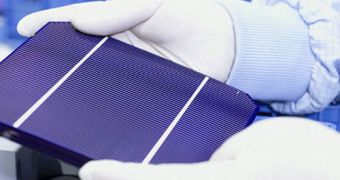The future of electricity production is undoubtedly in the renewable industry, but thus far high prices and low efficiency rates have stifled its spread with the general public. A new research could finally change all that.
Investigators at the Rutgers University, in the United States, have developed a new type of material that has properties which will enable it to set the foundation for a new generation of efficient and cheap plastic solar cells.
These new devices could ensure that every household will be able to produce its own electricity, without polluting the environment.
The new material is made up of organic semiconductors, which are carbon-based structures. Details of the research will appear in an upcoming issue of the esteemed journal Nature Materials.
Scientists with the research say that they observed particles called excitons traveling a lot farther in organic semiconductors than in other mediums.
Excitons are basically energy-carrying particles that are produced when semiconducting materials absorb light particles called photons onto their surface.
“Organic semiconductors are promising for solar cells and other uses, such as video displays, because they can be fabricated in large plastic sheets,” explains scientist Vitaly Podzorov.
“But their limited photo-voltaic conversion efficiency has held them back. We expect our discovery to stimulate further development and progress,” adds the expert, who is an assistant professor of physics at Rutgers.
He explains that, at this point, silicon solar cells are the norm in the renewable industry. However, he hopes that cells based on this new technology will soon be able to surpass their silicon counterparts in terms of cost and performances.
“This is the first time we observed excitons migrating a few microns,” explains Podzorov, referring to the fact that excitons were seen traveling between 2 and 8 microns in the new material.
“Once the exciton diffusion distance becomes comparable to the light absorption length, you can collect most of the sunlight for energy conversion,” the physicist says.
Silicon and gallium arsenide have similar ratios of exciton conductance, but they are inorganic materials, the Rutgers team concludes.

 14 DAY TRIAL //
14 DAY TRIAL //